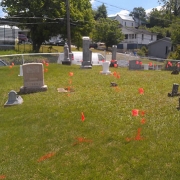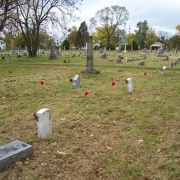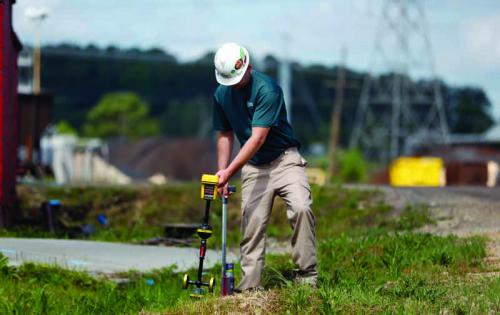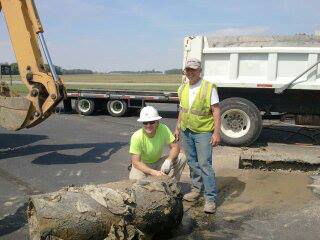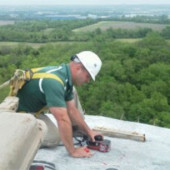The Most Frequently Asked Questions About Ground Penetrating Radar
Ground Penetrating Radar (GPR) is a technology that unobtrusively penetrates through the earth’s surface to properly define and identify underground unknowns and is used on several jobs that require special care. We know many of our customers don’t understand exactly how GPR works and we are continually answering the questions they have.
To help with any questions you may have about GPR technology, we’ve put together a list of the most frequently asked questions about GPR. Your questions may be on this list!
How does Ground Penetrating Radar work?
GPR is a geophysical method that uses radar pulses to image the subsurface. This non-destructive method uses electromagnetic radiation waves and detects the reflected signals from subsurface structures or anomalies.
Can you see non-metallic features with GPR?
Yes, GPR is an essential tool in searching for non-metallic AND metallic features such as underground storage tanks (UST), plastic water lines, sewers, grave sites, etc.
How difficult is it to use GPR?
GPR’s results can be very interpretive at times. For this reason, it can take years of training to become efficient with the technology in addition to refresher training.
How deep can GPR go?
Depth of GPR penetration depends on the material being surveyed and also the antenna frequency being used. For example, dry, sandy soils are ideal. This allows the radiation waves to penetrate farther, whereas slow, wet, soils such as clay absorb the waves making it hard for the signal to penetrate. As far as frequencies, higher frequencies can see small objects, but can not penetrate very deep. Lower frequencies can penetrate to greater depths, but can only see larger objects. For example, a 1” pipe at a depth of 10’ may not be seen with a low frequency
Can GPR be utilized through water?
Yes. GPR can be utilized through fresh water, but it does not operate where salt water is present.
Can GPR be used through ice?
Yes. GPR works extremely well through ice and snow. They are some of the most favorable conditions for GPR.
Can GPR be used to locate grave sites?
Yes. GPR is a great tool for locating marked and unmarked grave sites. While you will not see a skeleton, you will see a disturbance in the ground where the soil was excavated.
How big is GPR?
The everyday GPR that is used for locating utilities, UST’s, and grave sites is no bigger than your standard walk behind lawn mower. The GPR that is used for concrete scanning is about the size of a suit case. Both easily handled by one person.
Is GPR safe to the operator or spectator?
Yes, although ground penetrating radar may sound harmful, it is extremely safe and emits roughly 1% of the power of a cell phone signal.
Can I use my cell phone around GPR?
As long as the antenna you are using is shielded, it should not interfere with the GPR signal.
What does the data look like you get from GPR?
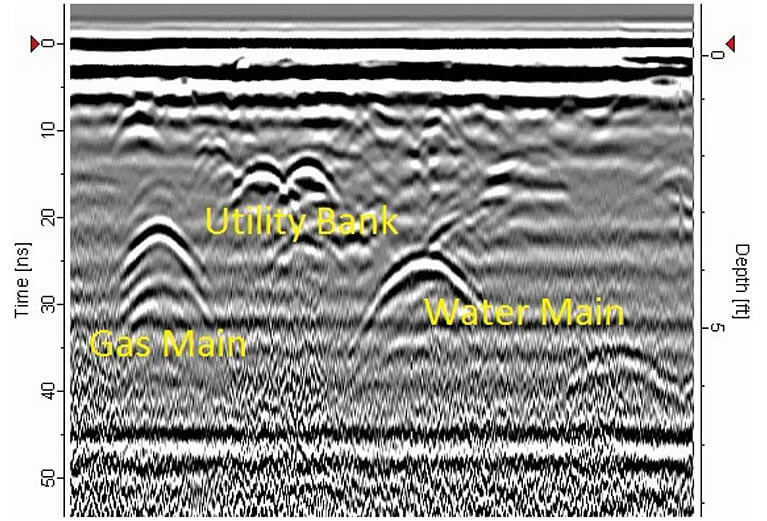
Is there a question you have about Ground Penetrating Radar that is still unanswered? We’d love to answer your questions! Contact us to learn more.


